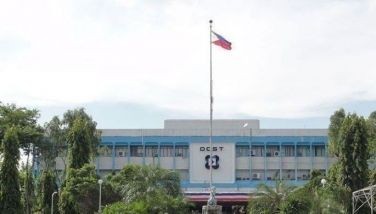All or nothing
Just recently, Metro Pacific Investments Corp. (MPIC) announced that it has further improved its offer to secure the right to operate the 94-kilometer Subic-Clark-Tarlac Expressway (SCTEX) tollway.
MPIC president Jose Ma. K. Lim was quoted by reporters as saying that they have sweetened their offer by P26 billion from the original P64.4 billion the company had offered earlier.
The company has also increased the government’s revenue share to 30 percent from the old 20 percent and has extended until 2019 the period within which MNTC will subsidize the payment for the Japanese loan that was secured by government to fund SCTEX from the original offer lasting only until 2016.
This is the third proposal that MPIC has submitted after Malacañang refused to approve the second improved offer.
This is also the “final, final†proposal, Metro Pacific Tollways Corp. (MPTC) president Ramoncito Fernandez told this writer. MPTC, a subsidiary of MPIC, is the parent of Tollways Management Corp. (TMC), which is the interim operator of SCTEX until October of this year.
In short, it is a take it or leave it proposal, he said.
President Aquino was reported to be not satisfied with the previous two offers and wanted a bidding.
Why the government is squeezing the blood out this particular turnip which has not proven its capacity to earn enough is beyond me. Unless of course, Malacanang wants to favor a particular group to operate SCTEX.
The SCTEX has been creating a hole in the government’s pocket given the low volume of traffic that uses this road that was built using a concessional loan from the Japan International Cooperation Agency (JICA).
The SCTEX financing amounts to P1.4 billion a year but the current traffic can only generate P700 million to P900 million a year.
MPIC’s offers could make sure that government would no longer be burdened with the JICA loan and at the same time have a steady stream of income from SCTEX’s operation. And all this time, MPIC has not asked the Bases Conversion and Development Authority (BCDA) to increase the concession period to allow for a longer period to recover investments.
But government still wants more. How much more, nobody knows. And as Lim earlier said, they can only give so much.
SCTEX by itself may find it hard to improve traffic and revenues. Like Skyway, SCTEX is an alternative road and some vehicle owners are not willing to pay the additional cost despite the fact that passing through these roads provide for a better traveling experience.
But knowing how the MPIC group works, it can turn around the situation and improve the volume of traffic and revenues from SCTEX if given the contract to operate it. But only because SCTEX is part of an overall business strategy of the MPIC group
The SCTEX forms part of MPIC’s plan of creating a “seamless†road network that would connect North Luzon to the South, with the company busying itself with road projects that would connect the North Luzon Expressway (NLEX) to the South Luzon Expressway (SLEX). And of course, given the fact that the MPIC group is a sister company of PLDT and is the parent of Maynilad, Meralco, a chain of hospitals, etc., it can find synergies to lower cost and improve profits.
MPIC and the Citra-San Miguel Corp. (SMC) group which operates the Skyway tollroad would use the same alignment and would jointly undertake the NLEX-SLEX connector road project with MPIC’s share at 38 percent and Citra-SMC at 62 percent. The project, however, would still be subject to a Swiss challenge since it originated from an unsolicited proposal.
Government should think twice about pushing MPIC to the wall. Already, MPIC has given up on its earlier plan to buy government out of the Metro Rail Transit 3. Instead of selling out to MPIC, government wants to spend $1 billion for full control of MRT 3. Once the takeover is completed, government would bid out the operation and maintenance (O&M) aspect of MRT 3 through a public private partnership (PPP) scheme.
To broaden its regional presence, the MPIC group is looking at infrastructure investments in other countries like Indonesia. This will include building roads, water systems, among others.
If our country loses potential private investments to its neighbors, then we only have our government to blame.
For comments, e-mail at [email protected]
- Latest
- Trending

























